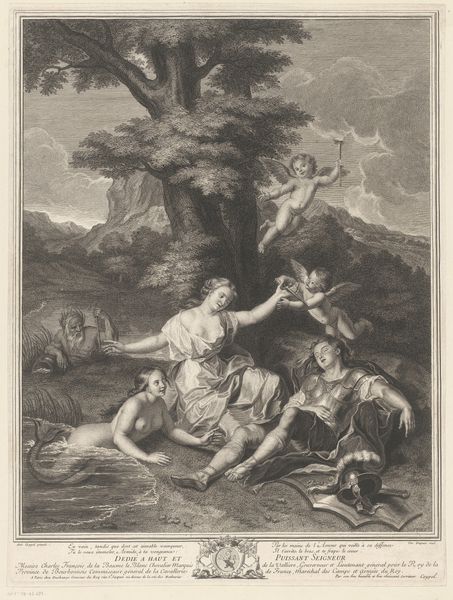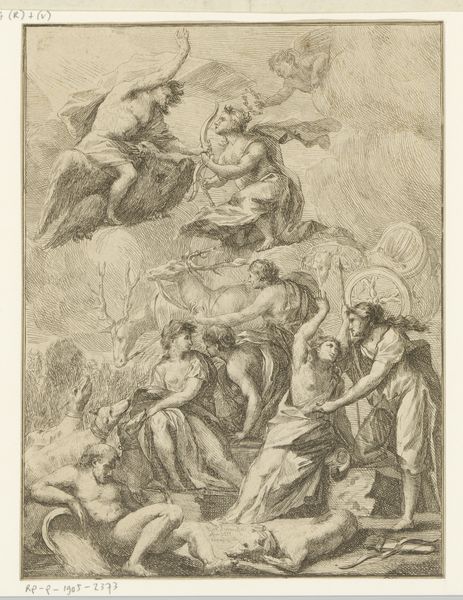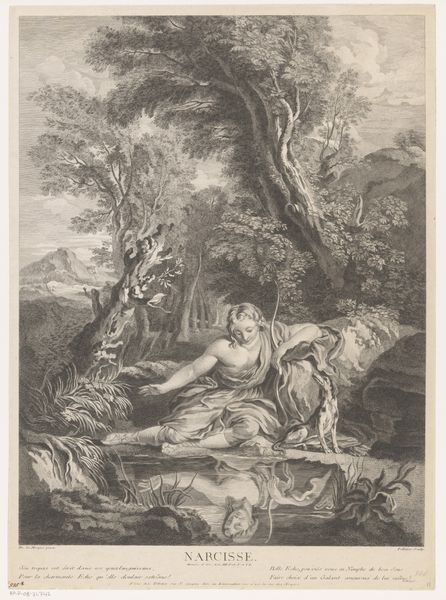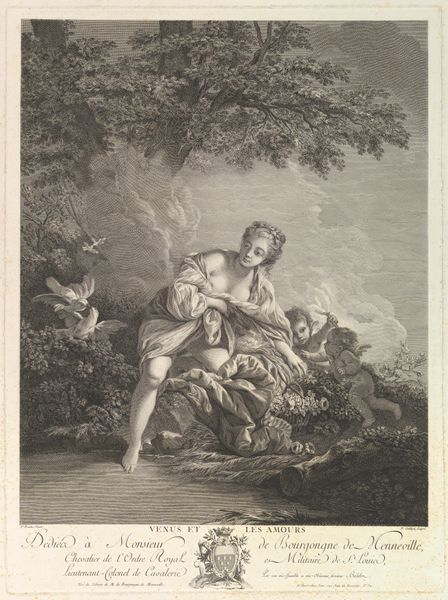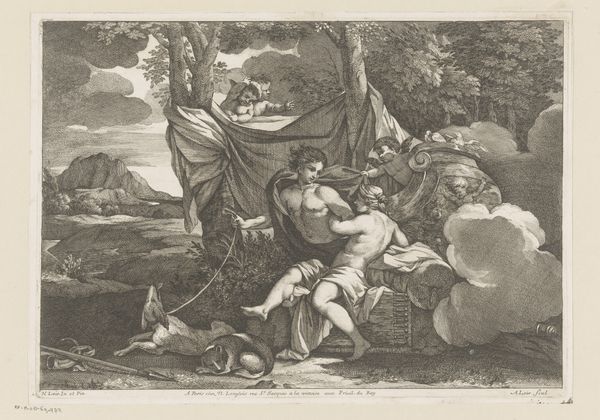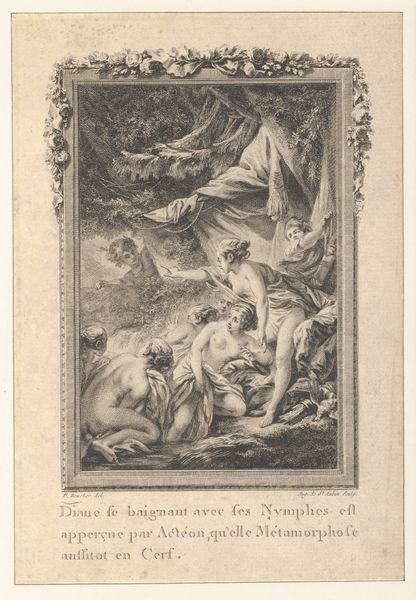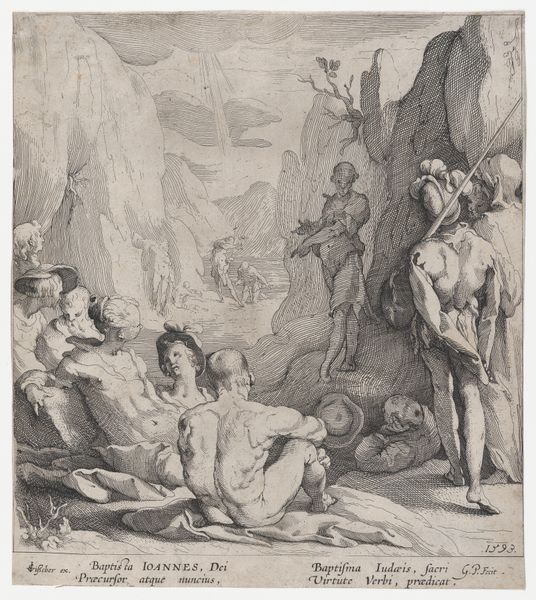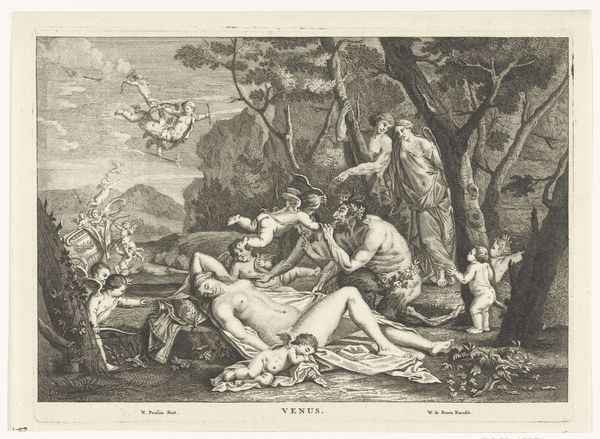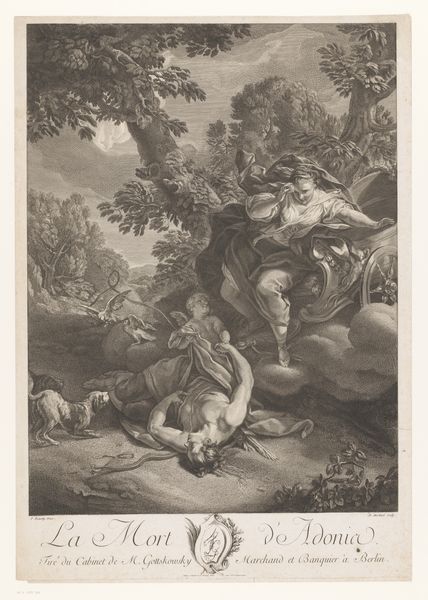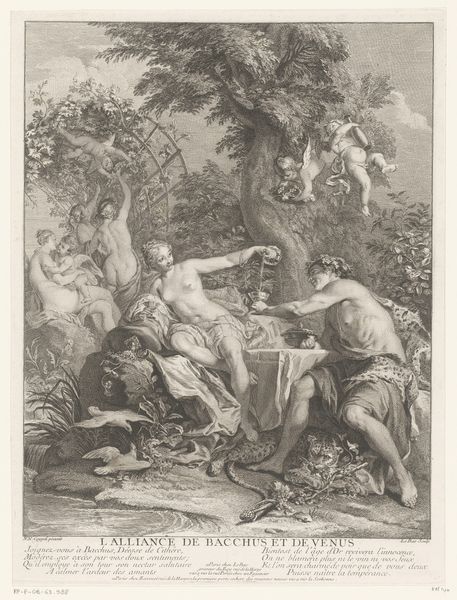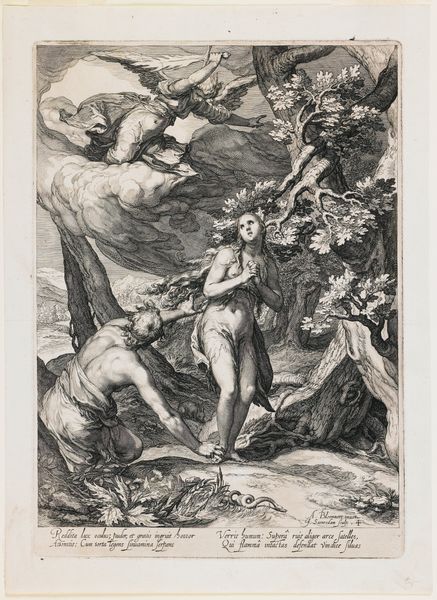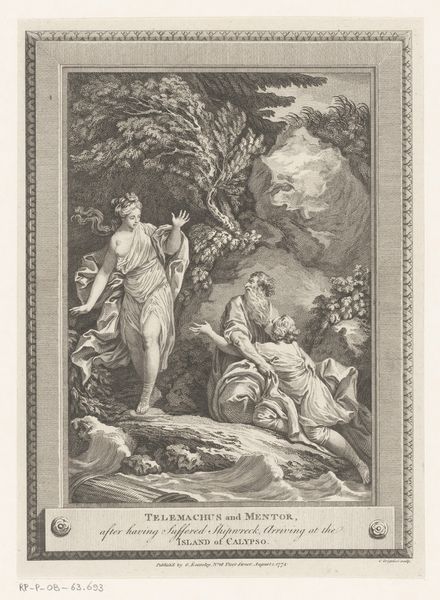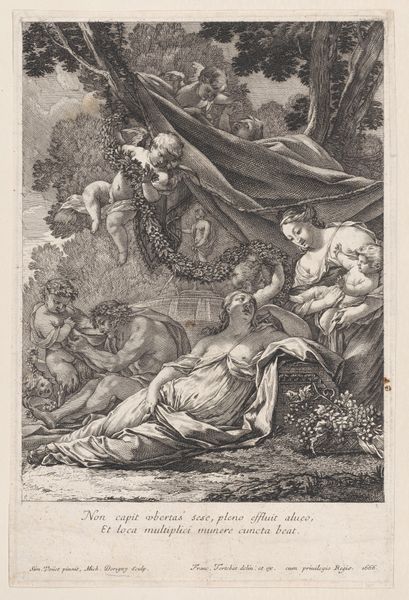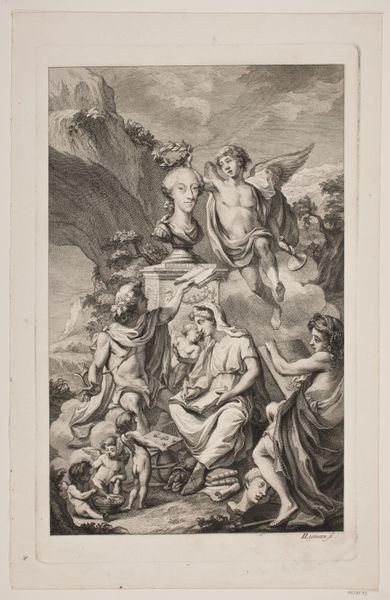
print, engraving
#
allegory
#
baroque
# print
#
old engraving style
#
genre-painting
#
nude
#
engraving
Dimensions: height 451 mm, width 325 mm
Copyright: Rijks Museum: Open Domain
Curator: This engraving, “Bathing Diana with Her Nymphs,” rendered in 1728 by Jacques Philippe Le Bas after the original by Charles-Antoine Coypel, depicts a classical scene, teeming with symbolic meaning and mythological resonance. Editor: It definitely gives off a feeling of staged voyeurism. The women are unclothed and the male figures seem…positioned to gaze at them, though it looks quite stylized rather than spontaneous. Curator: Right. Consider the iconographic elements. Diana, goddess of the hunt and moon, embodying chastity, is surrounded by her nymphs. Their nakedness represents purity, a state of innocence. The whole bathing ritual might relate to purification. The cupid aiming its bow introduces the undercurrent of love and perhaps disruption. Editor: But let’s look closer at the context. Genre painting combined with a nude allegory in this baroque style… It suggests an aristocratic sensibility. The male gaze feels deliberate; Diana’s power diminished in this tableau constructed for a male viewer, a nobleman like the Duke de Mortemart to whom it’s dedicated in the inscription. The scene isn't about chastity; it’s about display and ownership. Curator: I agree that the male gaze is a factor, of course. But even in that, there's an inherent tension: the powerful goddess, caught in a vulnerable moment. Coypel, and later Le Bas, was playing with that dichotomy. The engraving facilitates wider distribution of a carefully constructed image. Each viewer, a potential admirer of the Duke of Mortemart! Editor: Still, to frame it simply as a vulnerable moment risks erasing the historical power dynamics. These women exist solely for aesthetic consumption. It's the perpetuation of a problematic narrative where female bodies are art, property, spectacle... The setting itself, that contrived grotto, furthers a fantasy of ownership and a staged "naturalness." Curator: I understand. The engraving’s context is certainly loaded. Considering the baroque love for allegory and symbols, we can perceive an interaction of ideals about beauty, divinity and the relationship with nature—the engraver translating the oil sketch to a wide public via meticulously precise lines. Editor: True. And in engaging critically, we reveal hidden scripts about power, objectification, and how we perceive such historical constructions today. Thank you, Diana, for triggering a complex exploration! Curator: Thank you! Yes, it shows how charged such images are, and how alive in social context.
Comments
No comments
Be the first to comment and join the conversation on the ultimate creative platform.
